- Log in
-
- Sydney Overseas Office
- London Overseas Office
- Toronto Overseas Office
- Los Angeles Overseas Office
- New York Overseas Office
- Ulaanbaatar Overseas Office
- Dubai Overseas Office
- New Delhi Overseas Office
- Manila Overseas Office
- Jakarta Overseas Office
- Hanoi Overseas Office
- Kuala Lumpur Overseas Office
- Singapore Overseas Office
- Bangkok Overseas Office
- Map
- Sydney Overseas Office
- London Overseas Office
- Toronto Overseas Office
- Los Angeles Overseas Office
- New York Overseas Office
- Ulaanbaatar Overseas Office
- Dubai Overseas Office
- New Delhi Overseas Office
- Manila Overseas Office
- Jakarta Overseas Office
- Hanoi Overseas Office
- Kuala Lumpur Overseas Office
- Singapore Overseas Office
- Bangkok Overseas Office
Travelogues
-
-
-
[Jeonju] Place a period at the end of your long day in the slow city Jeonju: Jeongga Hanok, Jeonju
-
12/19/2022
540
-
0
0
-
-
-
-
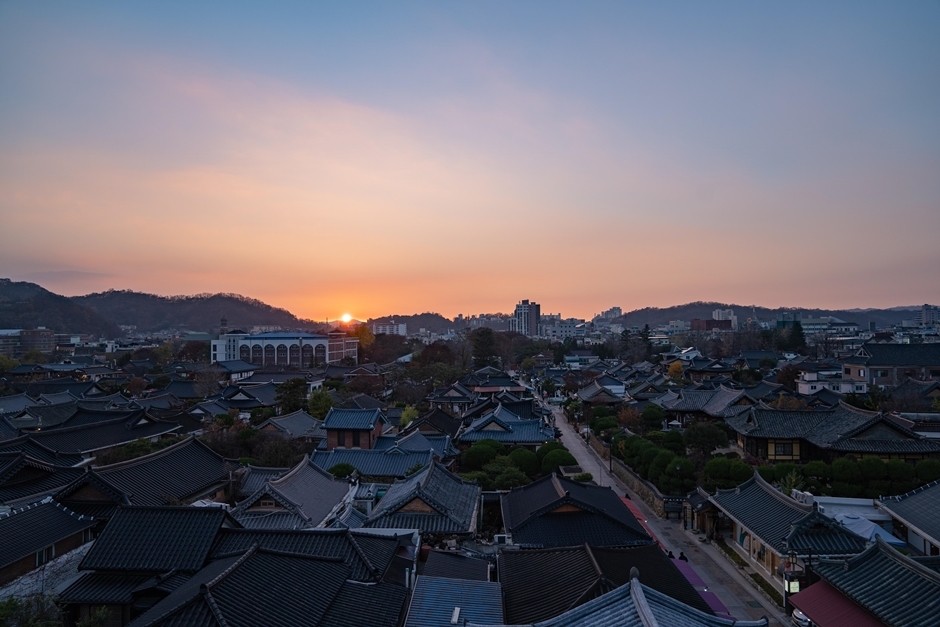
The end of the year approaches.
Many travelers look back on the year and prepare for one last trip to remember the year by.
There were many joys and tears, and one needs time to face them and digest them, preferably with valuable time off.
What could be a more ideal place to go for such people than the “slow city” of Jeonju?
This is our recommendation for visitors to this relaxing city,
where one can rest easy without stressing about the worries of everyday life.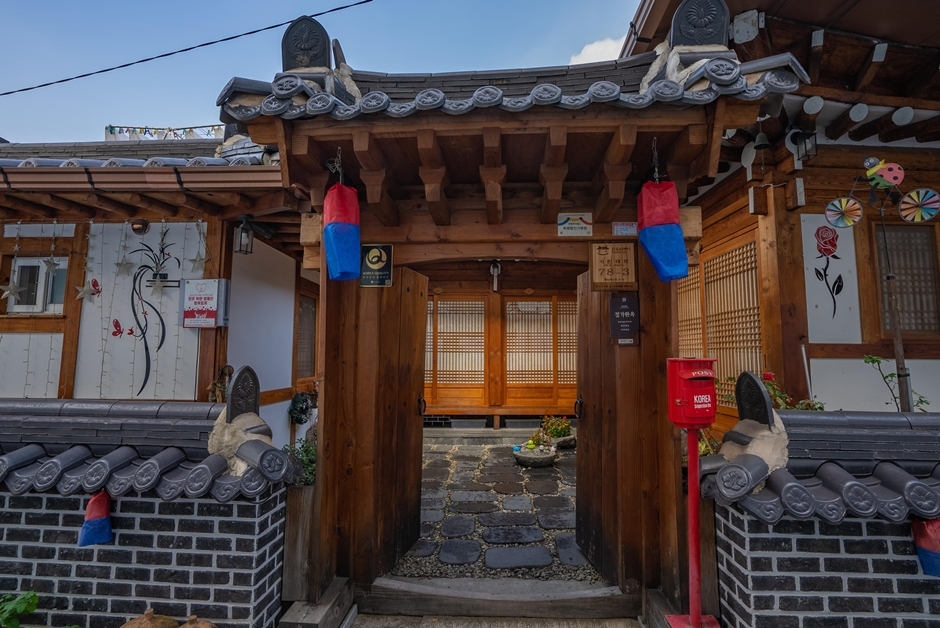
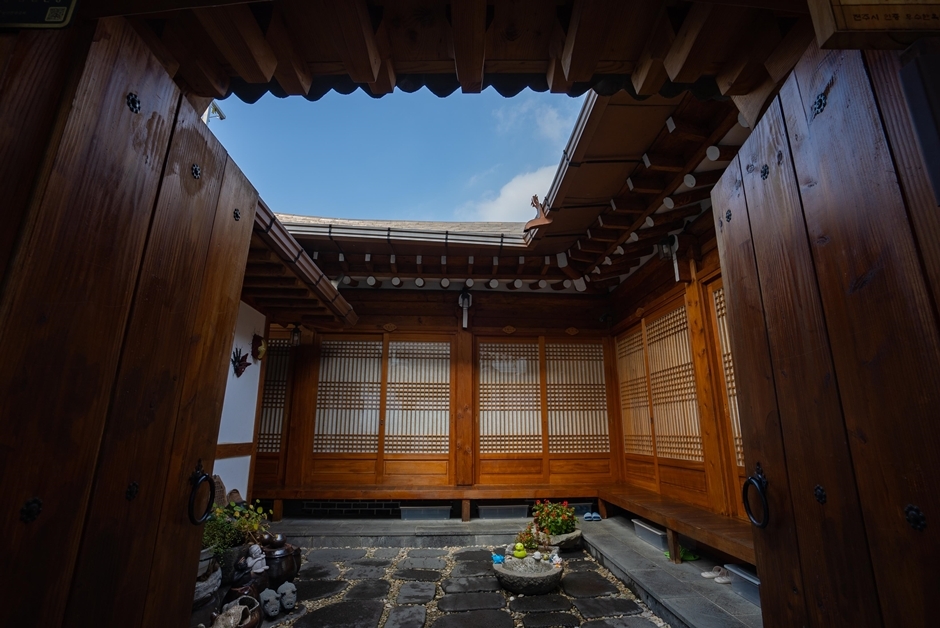
Furnished with attention to detail,
a charming hanok accommodation
Jeongga Hanok
Jeongga Hanok is a place with unparalleled accessibility
because you can find yourself at the entrance to the Jeonju Hanok Village by just crossing a road.
The distance between the Hanok Village and Jeongga Hanok is short enough for a walking tour,
but far enough to afford a measure of privacy from the bustling Hanok Village.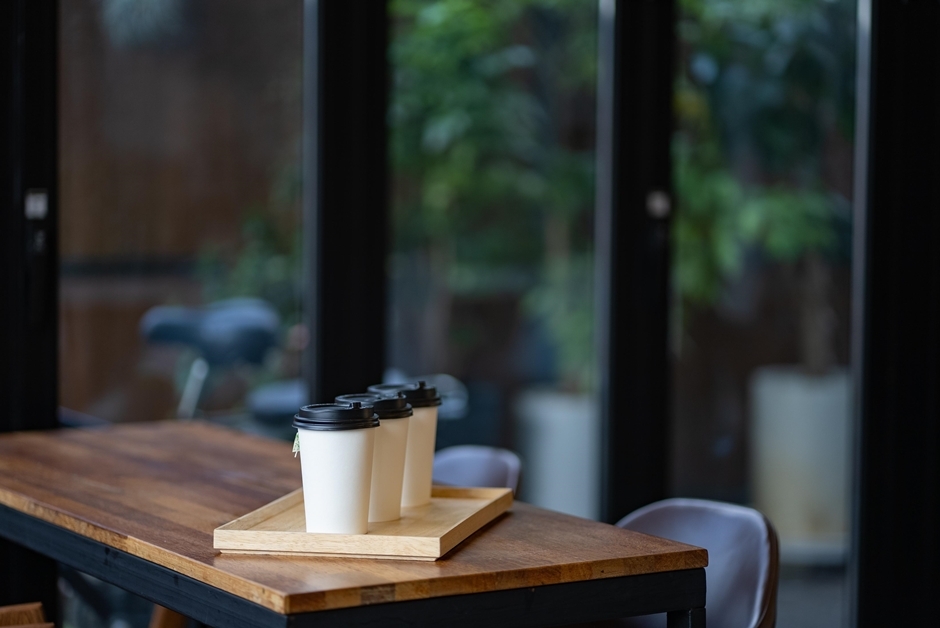
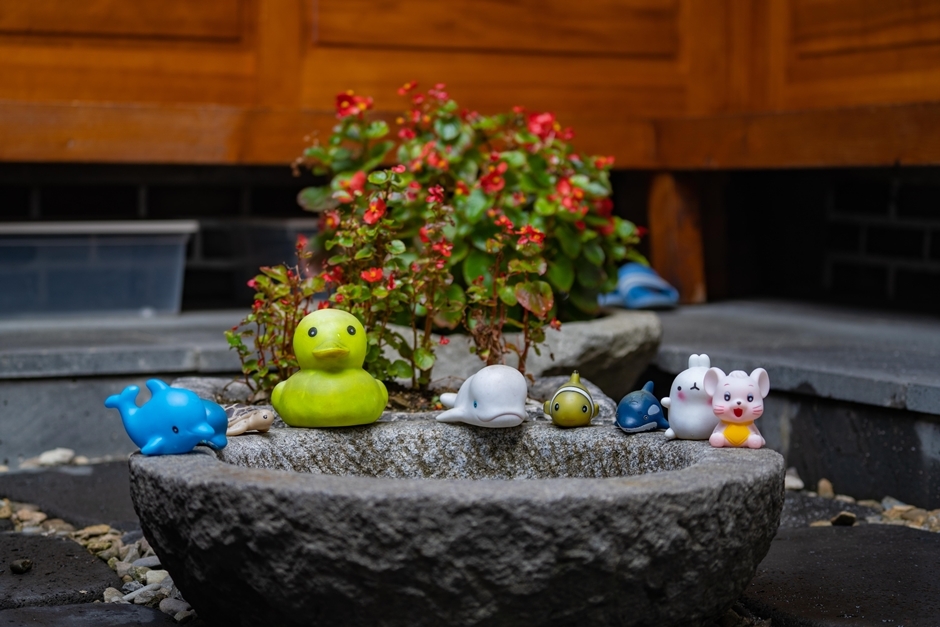
The management also operates a café and guesthouse next to the street,
which handles check-in and travel tips.
It is a great place to drop by and enjoy a cup of tea as you plan your next move in Jeonju.
The owner presents you with a map of Jeonju with information for tourists,
along with recommendations on places to visit.
It is a gift that warms your heart from the very moment of check-in.
Another warm moment can be found when you enter the courtyard.
The courtyard is relatively small,
but it is filled with small details and decorations that add a splash of color to your trip.
I found it particularly difficult to resist the allure of the wooden floor space (maru),
polished to a mirror-like sheen.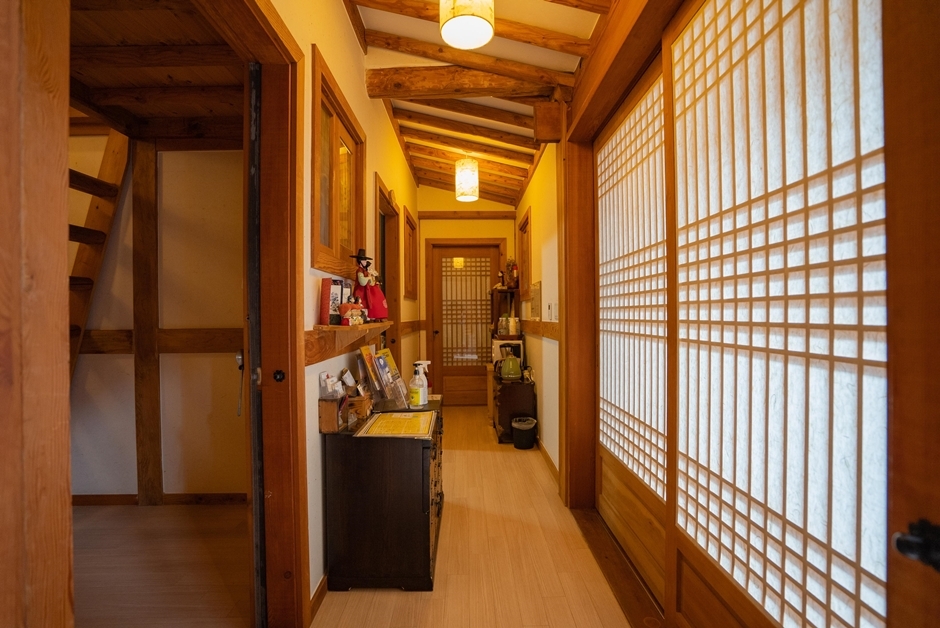
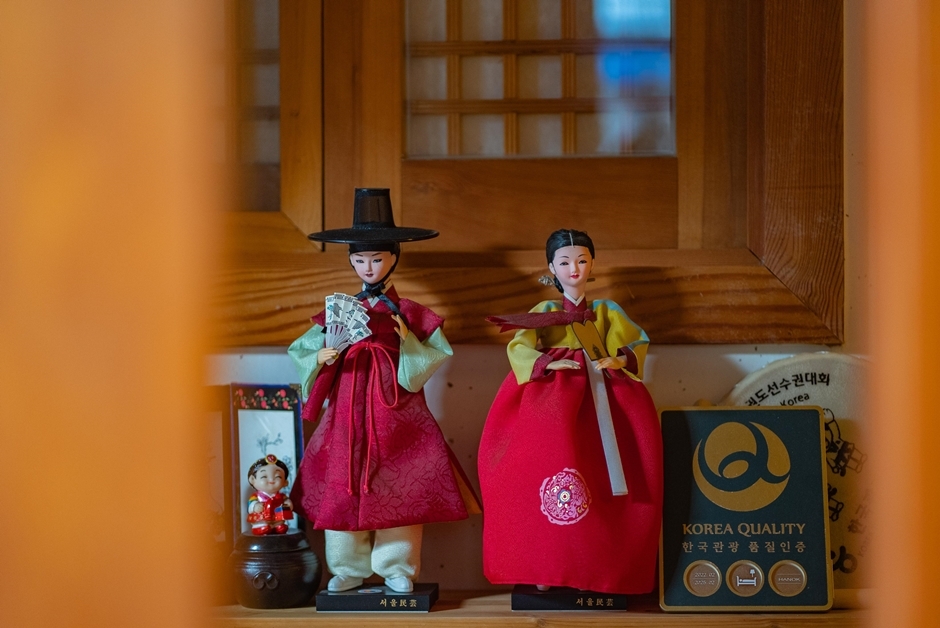
The rooms are next to one another, separated by walls,
but the smart use of space meant that the spaces did not feel cramped:
On the contrary, they appeared to be more spacious than their actual size.
The corridor was decorated with traditional props, and you can find a microwave oven,
bottled water, and other amenities for guests prepared in one corner.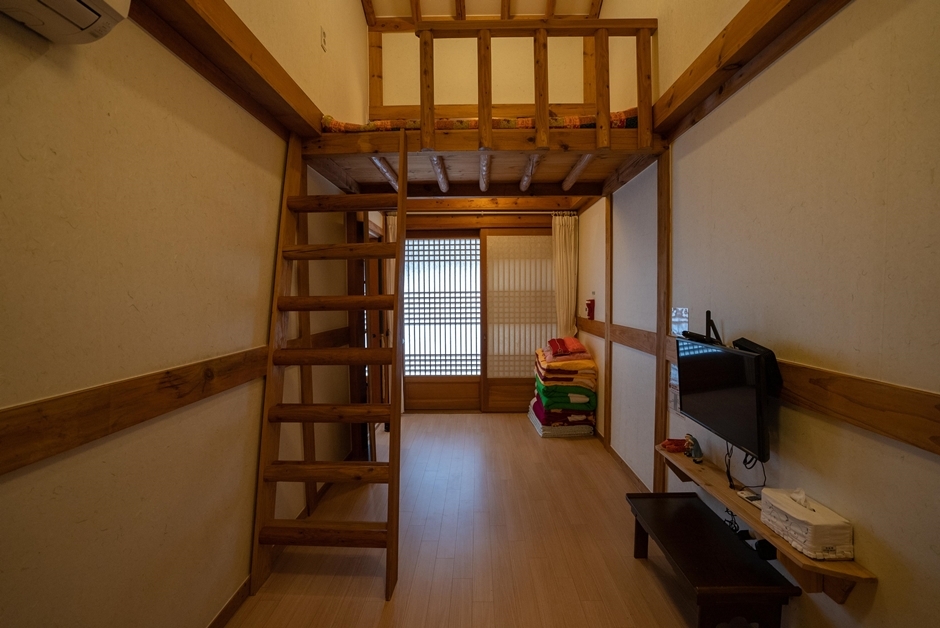
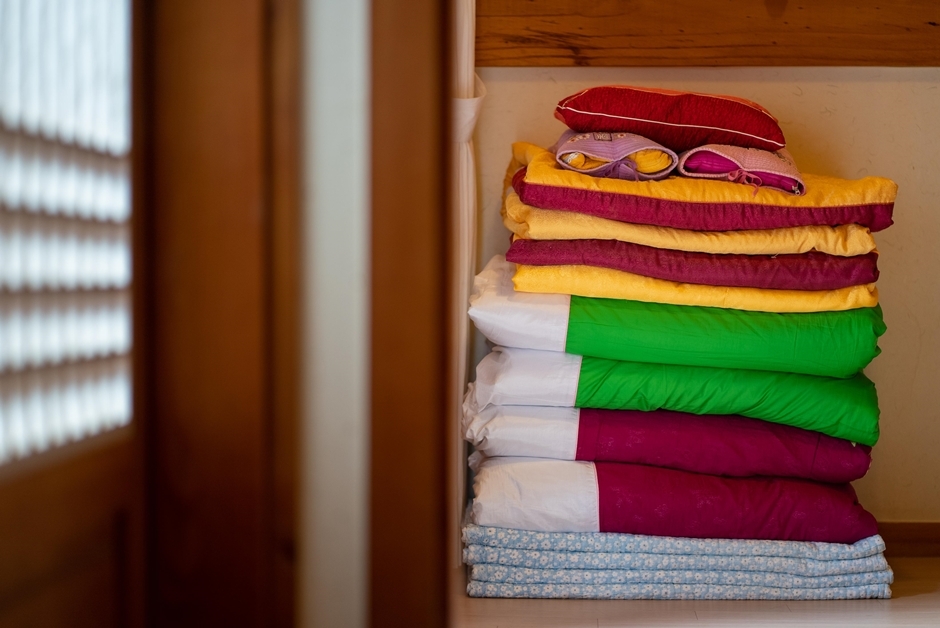
Hanok guesthouses are often associated with diminutive single-floor rooms.
Jeongga Hanok, however, ensures a wider space for its guests with larger rooms laid out across two stories.
Visitors can use the space according to their preferences, for instance,
sleeping on the second floor and using the first floor for rest and travel preparations.
The multi-colored bedding, just like the ones in the countryside homes,
wards off the chill with its thick and fluffy texture.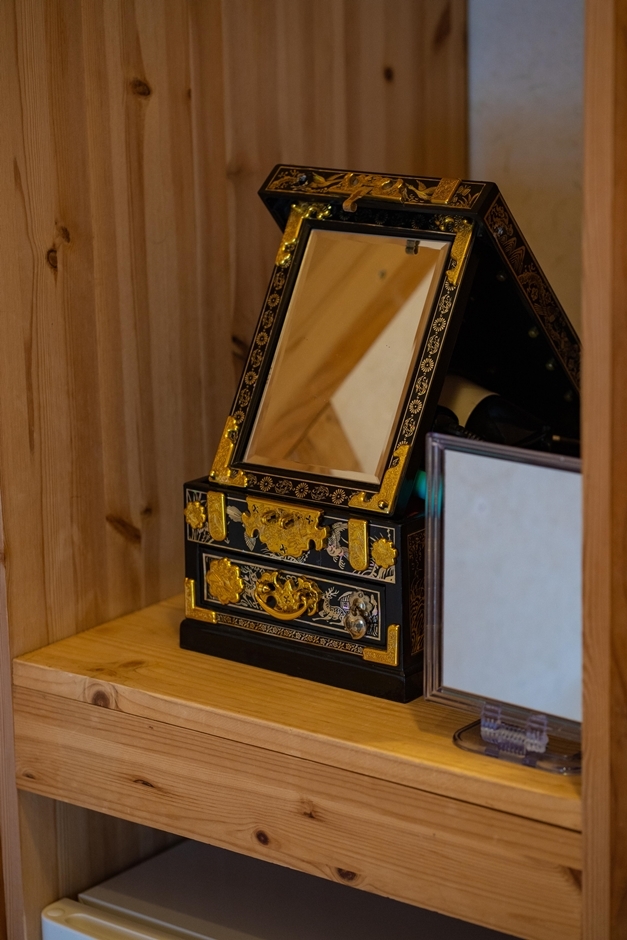
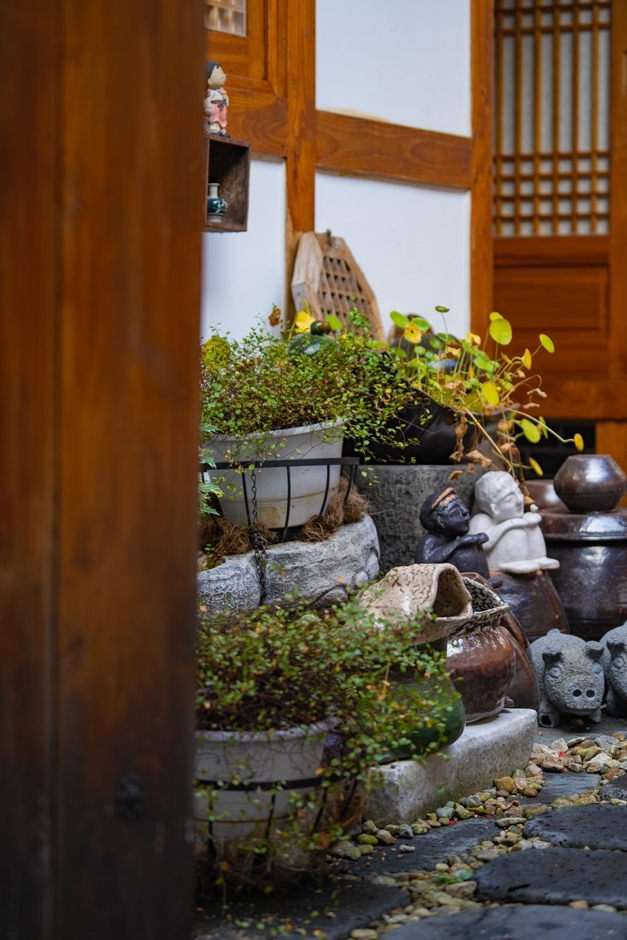
Jeongga Hanok offers a wonderful stay even for international visitors.
Even the mirrors in the room are colored with traditional patterns,
enriching their stay in the hanok accommodation with a uniquely Korean atmosphere.
Restrooms are furnished with full modern comfort,
and amenities like shampoo or face cleansers are plentiful as well.
You need only focus on having a restful stay in the hanok.
In Jeongga Hanok, that is as simple as feeling the texture of the mat below your feet and turning on the TV set.
But as the sun grows short, there is a shortage of warm daytime hours available during this season.
It is still warm enough to take a light jacket and explore Jeonju on foot,
so I set out to enjoy the last of the fall season in the city.
What could be waiting to be discovered in this city of tradition?
Read on and find out.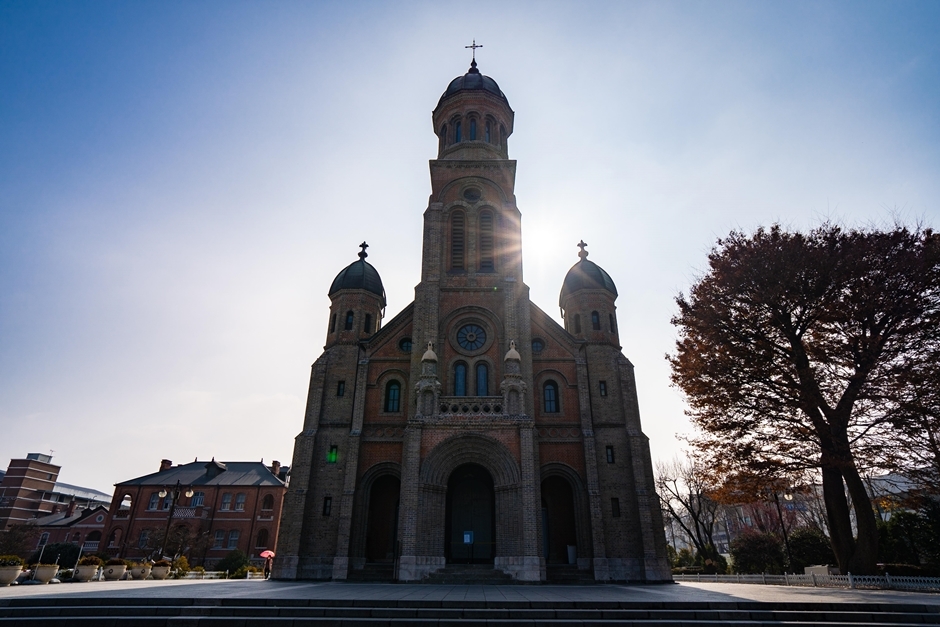
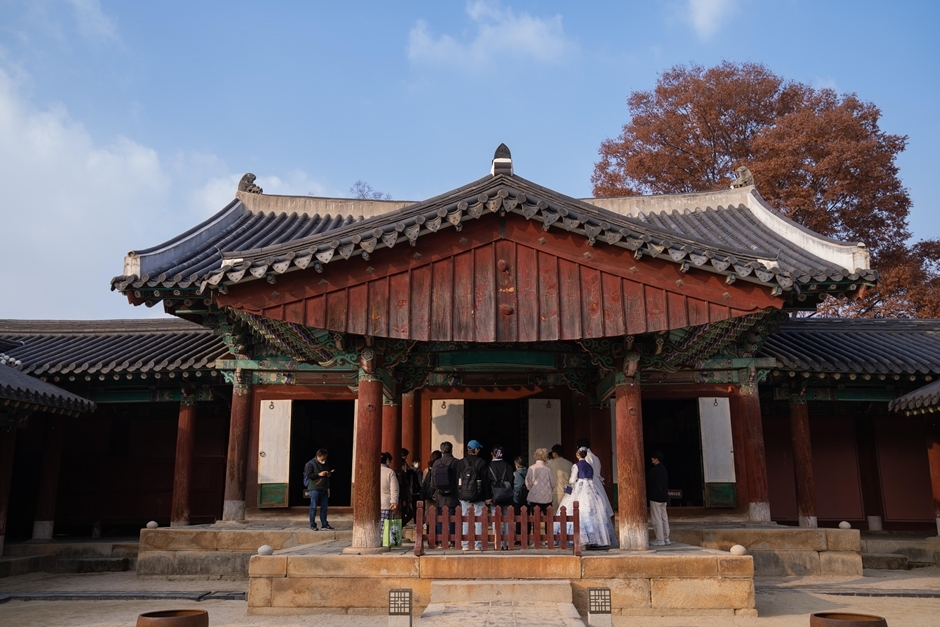
A beautiful meeting between the East and the West
Jeonju Hanok Village & Gyeonggijeon Shrine
& Jeondong Catholic Cathedral
Any visit to Jeonju starts with a tour of the road connecting Jeonju Hanok Village
with Gyeonggijeon Shrine and Jeondong Catholic Cathedral.
When one has had their fill of the uniquely dignified collection of hanok buildings,
one soon approaches upon the Gyeonggijeon Shrine, draped in fall colors,
and Jeondong Catholic Cathedral, a slice of Europe seemingly transplanted in the heart of Jeonju.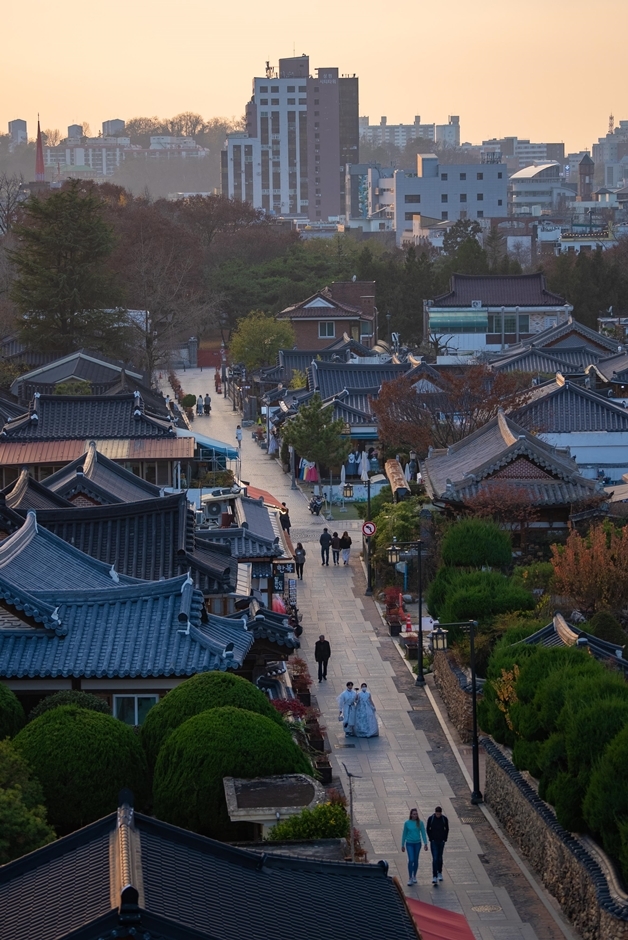

The formation of the Jeonju Hanok Village began in 1910.
Today, it is not only a popular tourist attraction in Jeonju but an integrated cultural space with contemporary sensibilities,
evident in its chic cafés, restaurants, souvenir shops, art museums, and exhibition halls.
More and more stores offer hanbok (traditional Korean clothes) and retro clothes for rental,
bringing glimpses of the bygone days into today’s neighborhood.
The sight of the visitors taking pictures against the flowing fall leaves and blue tile roofs has a magical quality of its own.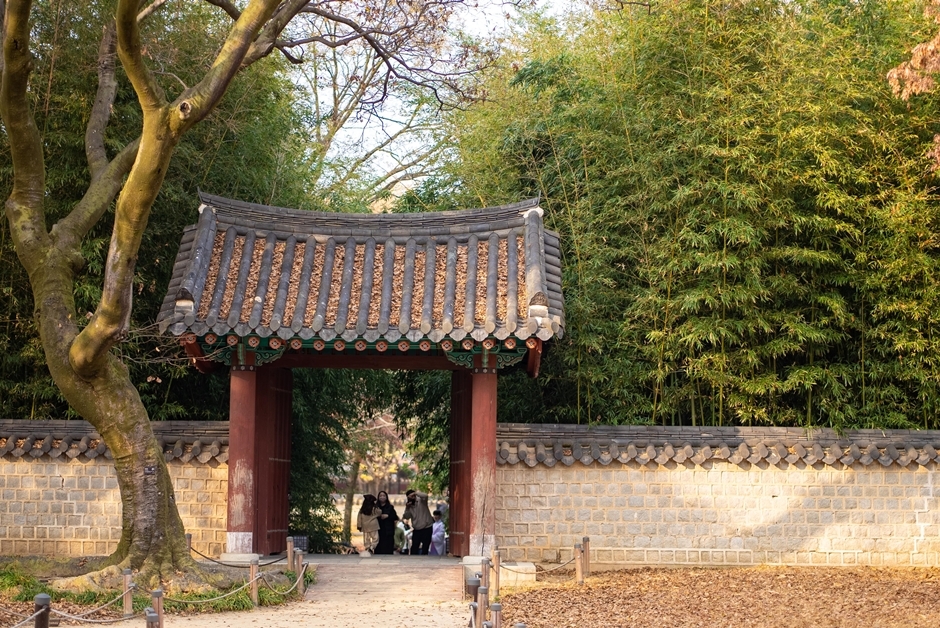
Gyeonggijeon Shrine, which houses the royal portrait of the founder of Joseon,
is a popular tourist site located next to the Hanok Village.
It is clad in an evergreen bamboo forest and has a garden that features seasonal colors,
so it is a great place to take a walk in the serene royalty.
Thanks to the season, I could find many couples filming their wedding photos in hanbok.
Their smiles and the soft shuffling sounds of hanbok clothes brought smiles to the onlookers as well.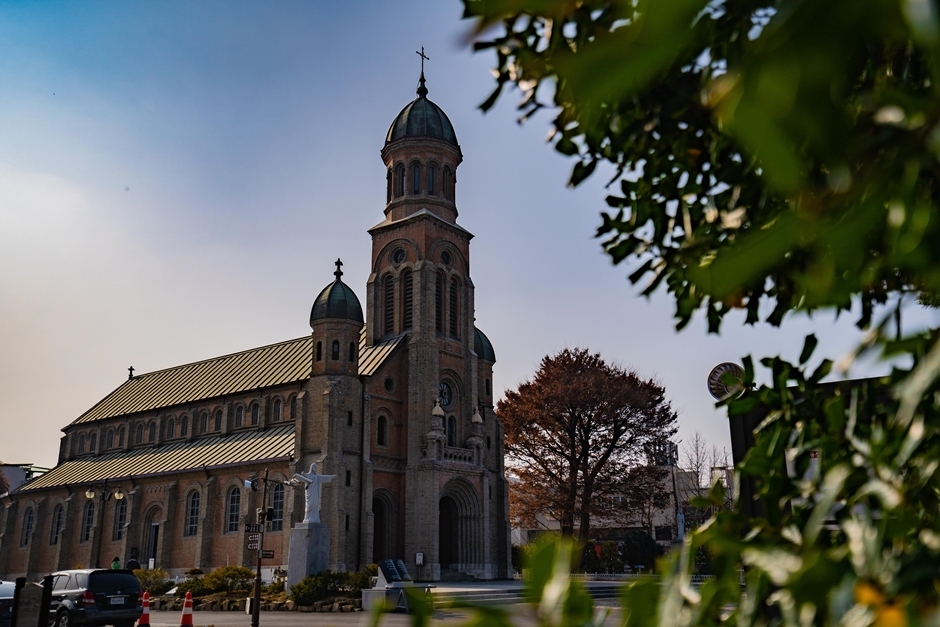
In 1889, Priest Beaudounet of the Society of Foreign Missions of Paris
(Société des Missions Etrangères de Paris) purchased the lands
that will become the site of the Jeondong Catholic Cathedral.
Completed in 1908 with a design produced by Priest Victor Louis Poisnel,
Jeondong Catholic Cathedral is the oldest Western-style building in the Honam region.
While the 1988 fire resulted in some parts of the structure being destroyed,
Jeondong Catholic Cathedral remains popular as a site of worship for many Catholics
and an eminent tourist site for many visitors to Jeonju.
The view of the majestic cathedral between the hanok buildings is surprisingly in harmony,
adding a dash of spirituality to the peaceful atmosphere of the region.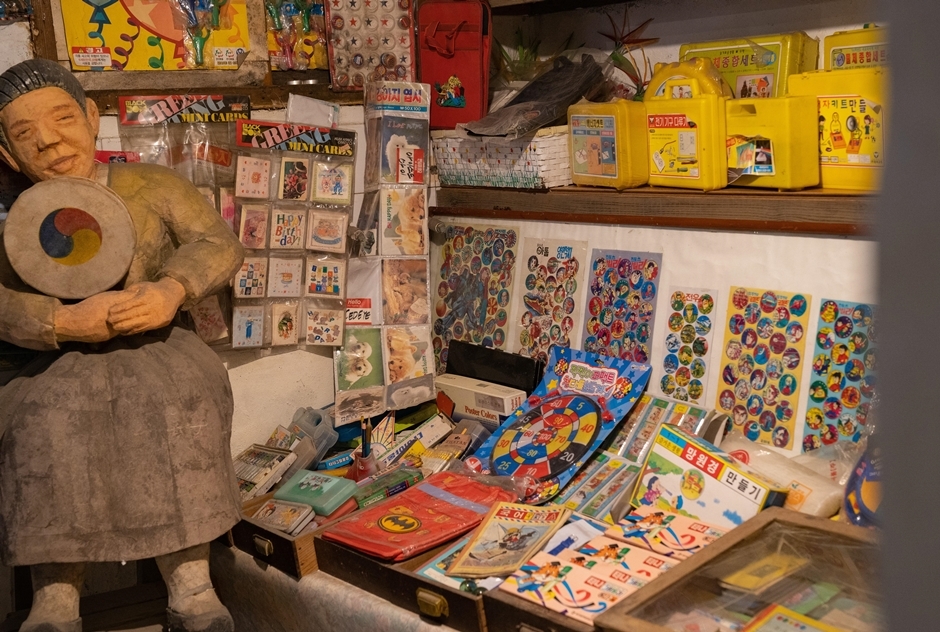
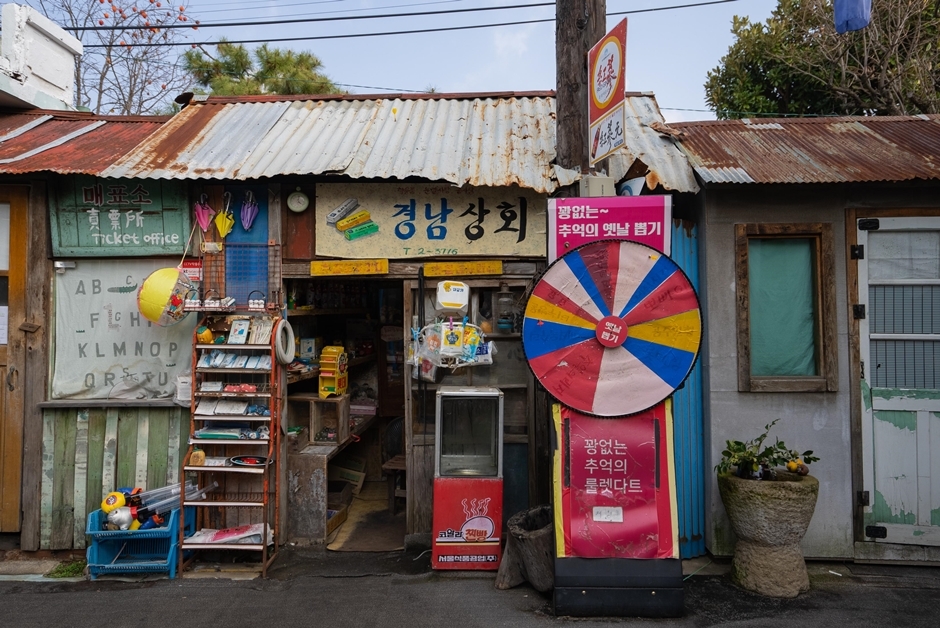
Capture the time periods between Joseon and today
Moments that became fond memories in
Jeonju Nanjang
Located in Jeonju Hanok Village, Jeonju Nanjang is a thematic museum
that recreates the 70s and the 80s in Korea.
Its creation took a whopping 25-year research and collection,
followed by 3 years and 6 months of construction.
The resulting space is rich in stories with great attention to detail,
making it an ideal place to reminisce with the whole family.
Interesting experience programs round out the experience,
such as drawing water from a functional well, feeding rabbits,
playing old arcade games, and sampling roasted sweet potatoes in retro-style cafés.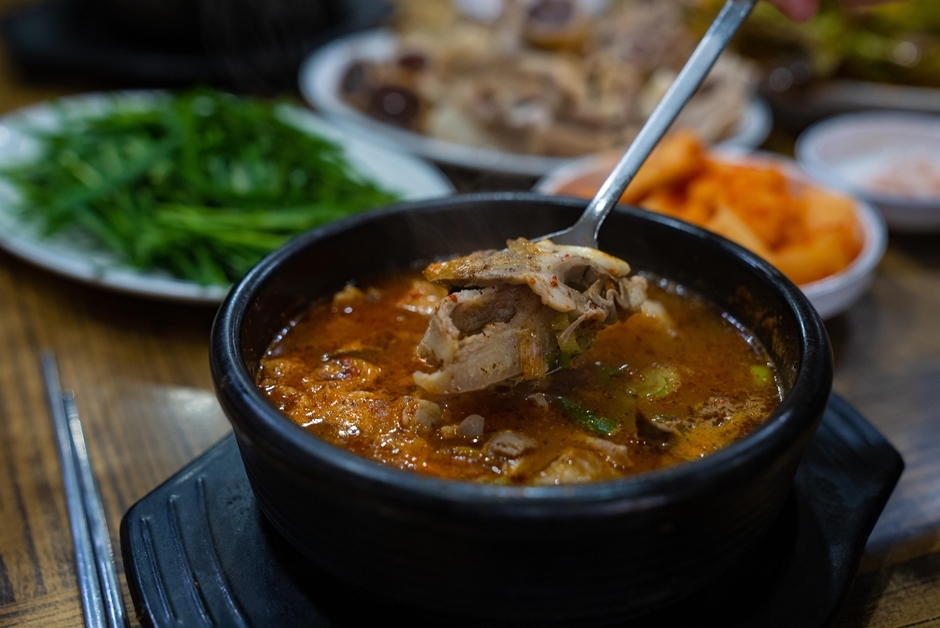
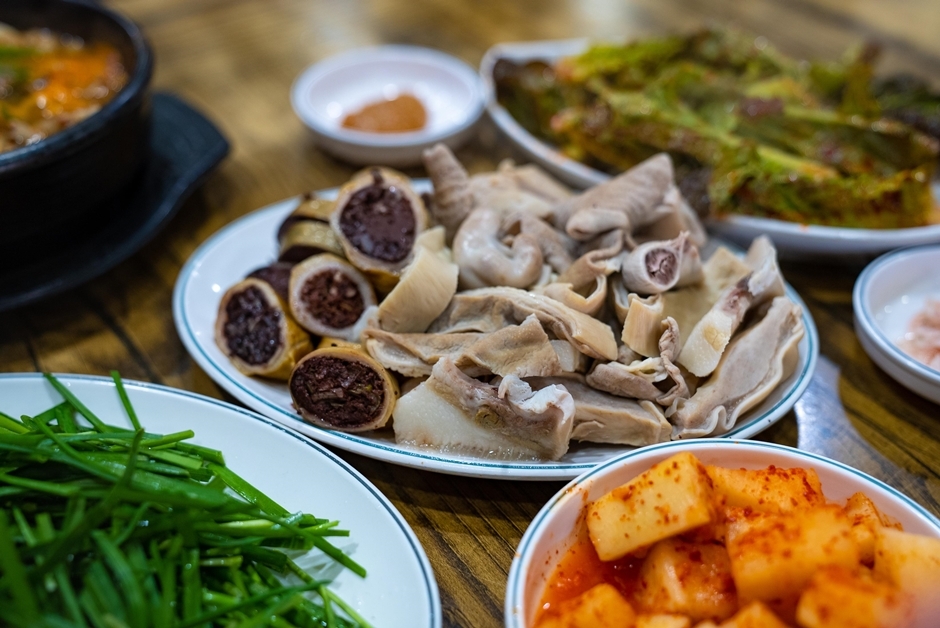
A true local food capturing the richness of Jeonju
Enjoy the blood sundae and the offal and rice soup in
Uri Sundaejip
Uri Sundaejip is a restaurant serving “sundae and rice soup” in Ua-dong, right next to Jeonju Station.
This is the place to sample blood sundae, or blood sausages,
a true local food that is often eclipsed by the more famous specialty, bibimbap.
The pork and rice soup here is hot and spicy,
in contrast with the milky-white soup of the Gyeongsang-do region.
The sundae here is full of seonji (coagulated blood),
in contrast to the usual fare of glass noodles.
Aficionados swear by its chewy texture and rich taste, so give it a try,
dipped in red chili paste sauce with vinegar and powdered perilla seed,
for an unforgettable experience.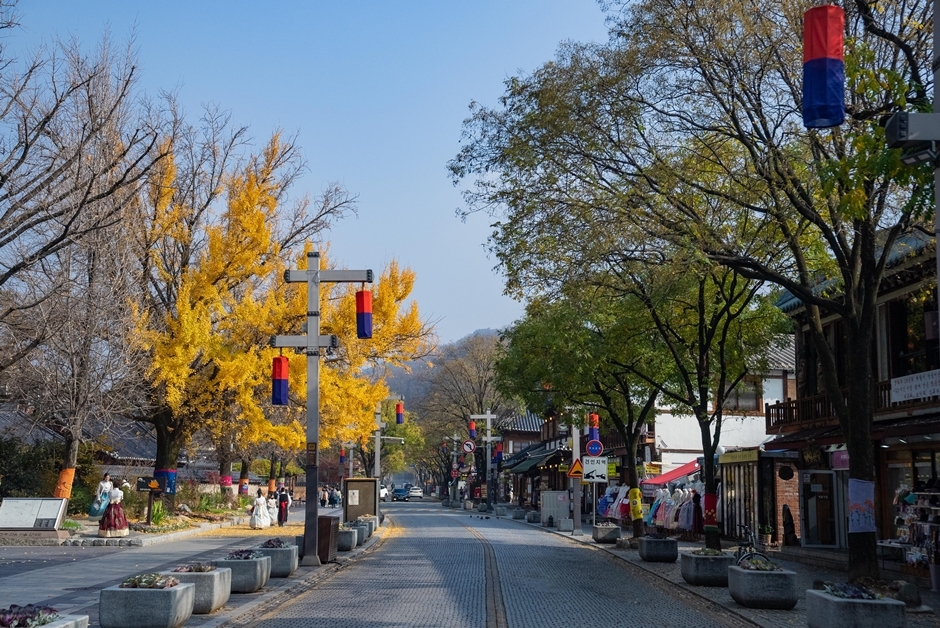
Slow city Jeonju is best enjoyed like its moniker, slowly and leisurely.
How about joining the fall leaves in their last dance
and reflecting on the virtues of a slower paced life in Jeonju?
Perhaps that slow and restful day is the best gift you can wrap up your year with.





